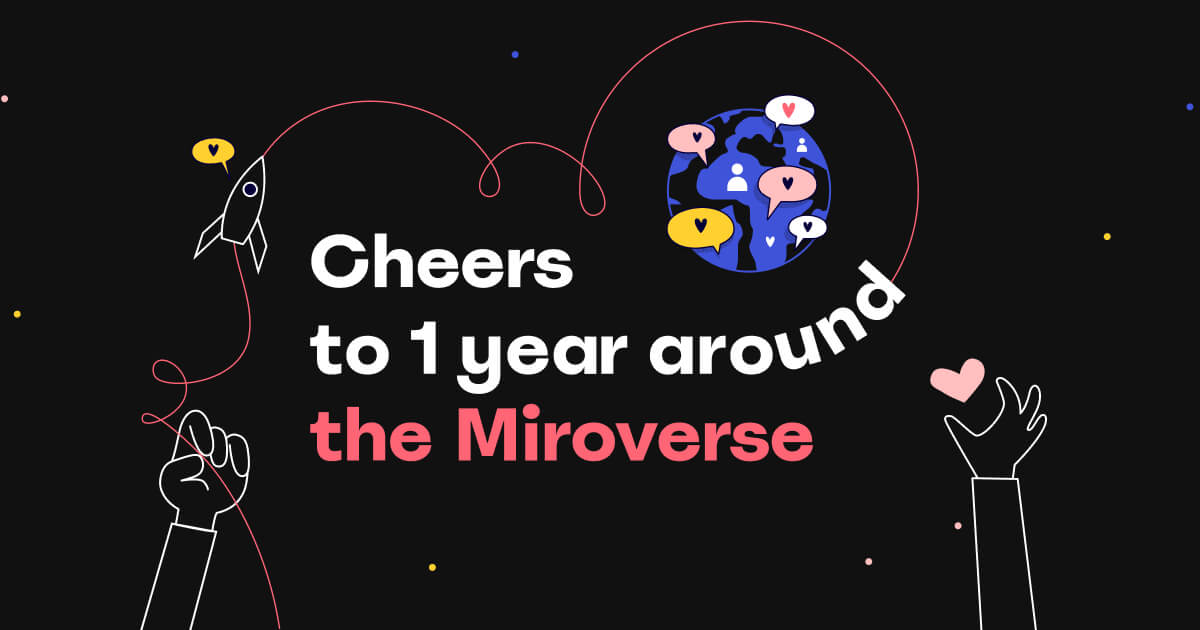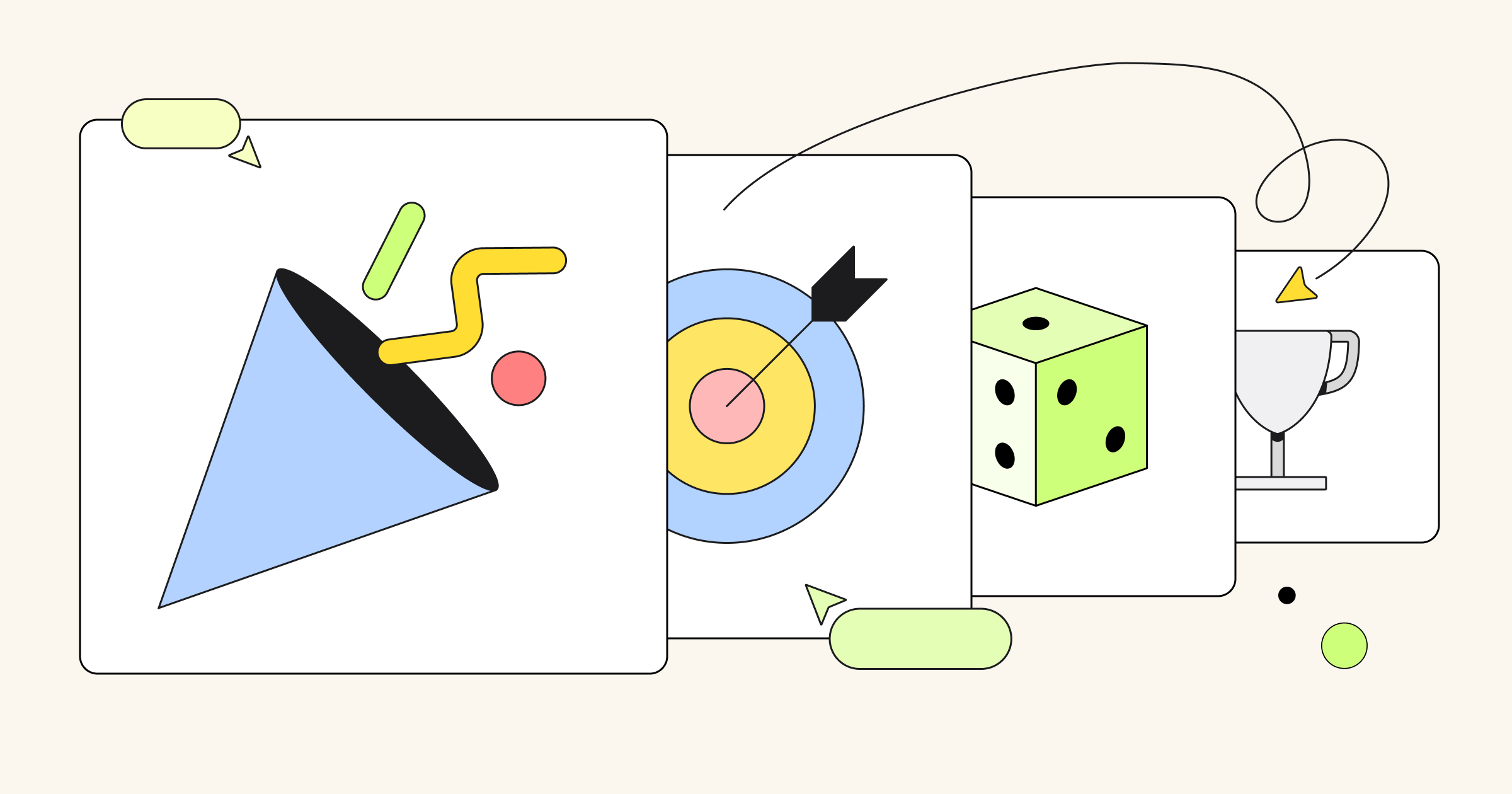It’s hard to believe it’s been a year since we launched Miroverse, our community templates gallery featuring real workflows from industry thought leaders, partners, and Miro users. Since then, we’ve seen more than 350 creators share 550+ templates, including frameworks, activities — even art. The best part? Miroverse makes it easy for anyone in the Miro community to copy and use each of these user-generated templates, so as the gallery grows, so does the impact of all the brave, generous teams who share their work.
Today, in honor of this Miroverse milestone, we’re sitting down with three members of the founding team to reflect on how it started, how it’s going, and where it’s headed.
Scroll on for insights from the Miroverse team: Product Manager Nik Pashkov, Product Marketing Manager Kristin Leitch, and Template Content Coordinator Mariam Danielian. And then check out our guidelinesto share your work in Miroverse.
First things first: What makes Miroverse so special?
Mariam: Miroverse is special because our users are special. We don’t put any limitations on what a Miroverse template submission can be — there aren’t any rigid expectations or themes. It’s pretty cool to have this group of people from very different backgrounds and professions coming together and being creative. What I notice is that a lot of templates build on each other, which means users see each others’ creations and get inspired, not only to create something for themselves but also to share it forward.
Kristin: Miroverse has shown us how valuable Miro can be for so many use cases we didn’t think of ourselves. Every month, we add more Miro heroes around the world — people who raise their hand to share their work on Miroverse and co-create. The past year has been really challenging for so many of us, both professionally and personally, so seeing people come together to share their resources and expertise has been really inspiring.
What are some highlights from the first year of Miroverse?
Explore the Miroverse
Kristin: My favorite part has been watching how it’s grown from a little platform with 70 templates made by ~50 brave people from companies like Xero, Coda, and AJ&Smart, who took a leap of faith and signed up to share their work with us. At Miro, our mission is to empower teams to create the next big thing, and we see that come to life in Miroverse every day. We see how the connection, resources, and tools we’re building help people get more out of work — plus all those unique use cases and ways people solve problems with Miro. It’s also opened our eyes to how flexible and unique our platform is. People are creating art with our sticky notes; they’re making board games and having baby showers here. I love that.
At Miro, our mission is to empower teams to create the next big thing, and we see that come to life in Miroverse every day.
Mariam: A highlight for me is seeing the enthusiasm of people on LinkedIn and other platforms when we release new Miroverse templates every month. I always look forward to seeing their anticipation and excitement for the new collection of templates.
Nik: From my point of view, launching Miroverse and going from zero to one was an exciting highlight. We had so many questions and so many hypotheses. The road was really nonlinear, and it was powerful to see the amount of feedback and love we collected from users about how Miro brings value to their daily workflows. It’s an amazing feeling going from an idea to an actual thing that succeeds and scales.
What are you most excited about for the future of Miroverse?
Mariam: I’m really excited for more people to find out about Miroverse, explore it, and bring their point of view to the community. I’m also looking forward to learning from the awesome submissions and sharing them with the internal team to see how we can use them to influence future product development and inspire our own processes.
Kristin: I’m excited to continue learning from our community and building things that people want — things that support what they’re already doing but make it better and easier and more collaborative.
What makes a great template? What kind of Miroverse submissions are you looking for next?
Mariam: We’re always looking to learn something new. It’s fun to see how a known tactic, framework, or even a simple one-on-one meeting template from one company could help people approach their tasks somewhere else. I often hear people ask, “What’s something new that I can submit?” but actually, a lot of times we’re looking for something that everybody does, just done in your own way. You never know whether there’s something unique about how you do things unless you share it with the world. Then you get to hear from others and share and talk.
I guess at the core of what I’m looking for is a template that answers how we can go about our everyday meetings and processes and improve them a little bit, to make them a little bit easier or just 1% more fun or 1% more beautiful. There’s other things like the visual appeal and storyline — but this really comes secondary to the unique way of doing things.
Kristin: Absolutely. There’s two ways I think about it: One of them is that we already have Miro templates that we built at Miro. Those are made for getting started — the easy, the accessible, and the more general or horizontal use cases, so everyone has a starting point. I think when Miroverse really shines is when it gets into the unique cases; when it gets into what makes your approach special and tells the story of how you do what you do.
I personally believe that a lot of people think of things they do as second nature like it’s how everyone does it, and they don’t realize how special it is, but someone else will. That’s feedback we’ve heard from the community as well; one of their favorite things about getting published is seeing how many people have started using their process. It’s always amazing to see how you can inspire others or unblock them. Other considerations like keeping a clear flow and making it easy to customize are important as well, but sharing your unique experience is most important, as is the bravery of sharing it in the first place.
Aside from submitting a template, how can people get involved with the Miro community?
Kristin: We actually have a whole list of ways people can get involved — which includes signing up to be a Miro Expert, join the Miro community, exploring Miro’s community-led events, and building your own app on top of Miro via Miro Platform. We’re also always looking to reshare creators’ work and examples of how they’re using Miro, so if you post on Instagram and LinkedIn, be sure to tag us! We’d love to support your ideas in that way as well.
Nik: +1 to the developer platform — it’s an amazing opportunity that allows us to build so many versatile things, and they don’t need to be super complex products and super complex apps. There are so many opportunities, and a lot of examples of people building relatively small plugins that are super valuable. What you do with the development platform could even become a future template.
Anything else future Miroverse creators should know?
Mariam: Yes! You can always tweak things after you publish, and you can always come to us for feedback or ideas. We also have a very active community space where people are happy to give feedback on how to improve your submission, so if you’re a little nervous before you submit and would like to get a gut-check, you can always run it by the community or share it with us for pointers.
It’s also worth mentioning that we have a review process for submissions and templates that don’t always pass, but that doesn’t mean that you shouldn’t try or apply again! We’ll always share feedback and try to point you in the right direction. Usually when we pass on a submission, it’s because we believe there are improvements that can be made, such as including more insight from you or your team, and not being afraid to show a bit more character when it comes to the visuals or the process itself.
NIK: We recently released one of our most requested updates — adding views, copies, and a like feature — which means everyone can now see how a template is performing, and show some love to their creators if you’re into their work. Another thing to know is that we have dedicated profile pages (like this one from VMware Tanzu Labs) where you can host all the templates you’ve shared in one space. It’s your own personal profile, and we recently updated the design to feel even more polished. Behind the scenes, we’ve also been focused on making sure that your templates are indexed in search so your work can be easily found by anyone who’s looking.
Lastly, I’d love to invite you to share your reflections on the first year of Miroverse so we can implement your feedback and keep improving our product. And if you’re thinking of submitting your first template: Don’t second guess yourself. Just ship it — it’s not as scary as it seems!




